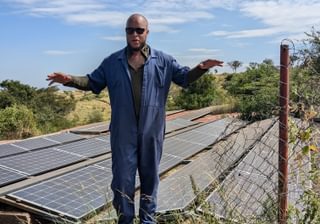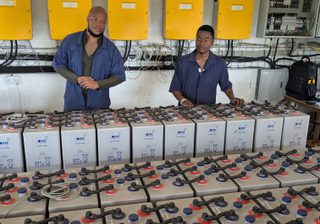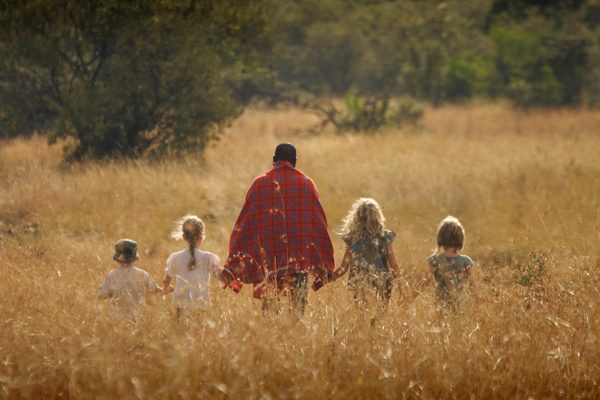Speak to a Africa expert today
and start planning your tailor-made holiday

Alistair
Africa Expert

Can't decide where to go? Why not peruse some of our most popular destinations for inspiration then give us a call!

A diverse land brimming with superb safaris, pristine sandy beaches, towering snow-capped peaks and tropical underwater worlds is just waiting to welcome you

Australia offers vibrant cities, diverse landscapes, and iconic wonders like the Great Barrier Reef. New Zealand adds dramatic scenery, Maori culture, and relaxed charm. Together, they promise nature, adventure, culture, and warm hospitality.

If you're dreaming of an island getaway, look no further than the Caribbean with its gorgeous soft sand beaches and lively, diverse cultures.

Head to the amazing destination that is Central America, full of the knowledge of ancient civilizations, incredible mountains, and beautiful beaches.

Discover vibrant cultures, pristine beaches, and tantalizing flavours in the captivating travel haven that is East and Southeast Asia

Embark on a journey through the vibrant tapestry of India, Sri Lanka, and Bhutan—where ancient temples, lush tea plantations, and soaring Himalayan peaks promise unforgettable moments at every turn.

Picture yourself basking on sun-kissed beaches, sipping tropical cocktails beneath swaying palms —where crystal-clear lagoons and luxurious resorts cater to your every desire.

Experience world-class hospitality, mouthwatering cuisines, and the region’s deep-rooted cultural traditions for an unforgettable Middle East adventure.

Venture to the ends of the Earth and behold the icy majesty of polar landscapes. Discover pristine solitude, exhilarating expeditions, and breathtaking views that promise a memorable encounter with nature at its most dramatic

Journey into the heart of South America, where the rhythmic pulse of its vibrant cities meets the majesty of the Amazon rainforest and the timeless wonder of ancient civilizations.

The South Pacific is a paradise of turquoise waters, white-sand beaches, and vibrant island cultures. From adventure and natural beauty to pure relaxation, each island offers its own unique charm and welcome.

From the soaring plains of the Southwestern USA to the stunning landscapes of the expanses of Canada, visit some of the most impressive scenery in the world

If you are looking for a trip to knock iconic locations off your bucket list, check out our buck list recommendations

From the graceful stride of giraffes at sunrise to the echoing roars of lions beneath starlit skies, each of our safaris promises an unforgettable dance with nature.


Our family holidays are a perfect opportunity to create lasting memories, whether exploring new destinations or simply enjoying quality time together. From adventure-filled escapes to relaxing beach retreats, they offer a chance to reconnect and unwind away from daily routines.

Our luxury holidays offer the finest experiences, from exclusive resorts and private villas to tailor-made adventures with impeccable service.

For those seeking adventure beyond the usual tourist trails, our off-the-beaten-track trips take you to some of the world’s most remote and untouched destinations, where authentic cultural encounters and breathtaking landscapes await. Let us craft your unique journeys that few travellers ever experience.

For the ultimate beach escape, we offer luxury holidays to some of the world’s most stunning coastal destinations, from the white-sand shores of Antigua to the turquoise waters of Zanzibar.

For those who crave excitement and exploration, our adventure holidays take you to some of the world’s most thrilling destinations, whether trekking through Patagonia, summiting Mount Kenya, or kayaking past icebergs in Antarctica.

Interested in something a bit more focused? How about a horse-riding holiday through Argentina? Or a photography safari? Look through our Special Interest holiday selection for inspiration

Our wildlife holidays invite you to step into unique ecosystems and experience amazing animal encounters. Whether spotting majestic tigers in the jungles of India or marvelling at polar bears in the Arctic, each trip promises awe-inspiring moments steeped in the magic of nature.

Our small group tours offer the perfect balance of expert-guided exploration and personal experience, taking you to incredible destinations with like-minded travellers. Whether it's a wildlife safari in Botswana, a cultural journey through Vietnam, or a chef-led expedition through India, our carefully curated itineraries ensure an intimate, enriching, and hassle-free experience.

Sustainability travel is at the core of what we do and a guiding principle in every choice we make as a business. Let us help you make sustainable travel choices

Read about what we do to make a difference

One of the most important parts of our commitment to responsible travel is protecting our clients, and it is a part that we take extremely seriously.

Not sure what's best for which time of year? Check out our expert-written guides

Looking for some expertise on your destination? Have a look through our selection of guides and articles written by our destination experts

Looking for more inspiration? Read from our range of hundreds of articles from our travel specialists, local guides, and personal travel tales.

Our mission is to make every holiday special. We will do this whilst specifically aiming to minimise the environmental impact of our activity and maximise our opportunity to influence others to do the same.

Far & Wild Artwork by local Cumbrian artist Sophie Botsford
Safari vehicles vary from camp to camp, and country to country. In this guide we want to show you an example so you know what to expect. On the whole there are 2 main types of vehicle.
Electric safari vehicles are an emerging trend in eco-friendly wildlife tourism. These vehicles offer a sustainable alternative to traditional gas-powered safari trucks, allowing visitors to observe wildlife with minimal environmental impact.


A well-equipped safari truck combines rugged functionality with luxurious comfort to enhance the wildlife viewing experience. These vehicles typically feature an elevated, open-air seating area with padded bucket seats and individual armrests, allowing passengers unobstructed views of the surrounding landscape. High-end models may include leather upholstery, adjustable headrests, and even heated seats for chilly morning drives.
The truck is often outfitted with a mini-fridge stocked with refreshments, as well as charging ports for cameras and devices. Some luxury safari vehicles boast a retractable canvas roof for shade, powerful spotlights for night drives, and state-of-the-art suspension systems to smooth out rough terrain. Binoculars, field guides, and sometimes even Wi-Fi hotspots are provided for guests' convenience and enrichment.

Most Safari vehicles are Land Rover Defenders and Toyota Land Cruisers, seating up to seven guests plus your driver. They are designed to maximise wildlife viewing in the National Parks as well as comfort on the roads in-between the parks. The below seven seat vehicles have special features including window seats for all passengers, as well as a pop-up roof so that you can stand up and get an amazing unobstructed view of the animals. These provide more comfort and security, with air conditioning and protection from dust and weather. They're suitable for all-weather conditions.

Where long journeys by road aren't required for your safari, most of southern Africa, open sided vehicles tend to be used. These 4x4's are normally Land Cruisers, or Land Rovers. Open sided vehicles have their advantages. They provide an unobstructed view of the surroundings, allowing passengers to feel more connected to nature. They're ideal for photography and offer a thrilling, immersive experience. If shade is needed most vehicles will have sunshades.

As battery technology improves, these vehicles are becoming increasingly practical for longer safari tours.
Solar-powered safari vehicles utilise photovoltaic panels installed on the roof or other suitable surfaces to harness the abundant African sun. This renewable energy source can be used to charge the vehicle's batteries, power onboard equipment like refrigerators or charging stations for guests' devices, and even contribute to the energy needs of safari camps. The integration of solar power not only reduces the carbon footprint of safaris but also increases the vehicles' range and self-sufficiency, particularly valuable in remote areas.

While still in the early stages of adoption, solar-powered safari vehicles represent an exciting frontier in sustainable tourism. They offer the potential for truly off-grid, zero-emission wildlife viewing experiences, aligning perfectly with the conservation ethos that underpins responsible safari tourism.
Many wildlife reserves and national parks are now incorporating electric vehicles into their fleets, demonstrating a commitment to sustainable tourism.


Electric safari vehicles offer several advantages:

Safari vehicles are an essential part of the wildlife viewing experience, bridging the gap between human visitors and the natural world. Whether closed or open, traditional or electric, these vehicles are designed to navigate challenging terrains while prioritising passenger safety and optimal wildlife observation.
The choice between closed and open vehicles often depends on the region, climate, and specific needs of the safari. Closed vehicles offer protection and comfort, making them ideal for longer journeys and variable weather conditions. Open vehicles provide an immersive experience and are excellent for photography, best suited for areas with milder climates and shorter drives.


Equally important as the vehicles themselves are the experienced safari guide drivers who operate them. These skilled professionals are much more than just drivers – they are knowledgeable naturalists, expert navigators, and passionate storytellers. With years of experience in the field, they possess an intimate understanding of animal behaviour, local ecosystems, and the best spots for wildlife viewing. Their expertise not only ensures guest safety but also dramatically enhances the safari experience by providing insightful commentary, identifying species, and positioning the vehicle for optimal viewing and photography opportunities.

The emerging trend of electric safari vehicles represents a significant step towards sustainable tourism. These eco-friendly alternatives maintain the functionality of traditional vehicles while reducing environmental impact through silent operation and zero emissions. Experienced guides are adapting to these new technologies, leveraging the quieter operation to get even closer to wildlife without causing disturbance.
Ultimately, regardless of the type of vehicle used, the goal remains the same: to provide visitors with unforgettable encounters with wildlife while preserving the delicate ecosystems of the world's most precious natural areas. As technology advances and environmental concerns grow, we can expect safari vehicles to continue evolving, always striving to balance the thrill of adventure with responsible conservation practices. Throughout this evolution, the role of the experienced safari guide driver will remain crucial, continuing to bridge the gap between visitors and the wild, natural world they've come to explore.
Whatever sort of vehicle you're in you'll have an amazing safari, for more inspiration, check out our 26 best safari ideas or call our team on 01768 603 715 and they'd be happy to help.
If you're planning you're researching your first safari, you might also want to take a look at our guide on 'where to go on my first safari' or big five safaris.
and start planning your tailor-made holiday

Africa Expert






What can I say….my son and myself had the most wonderful time in Kenya thanks to the first-class itinerary that Ben and Louise put together for us. We spoke with Ben many times to ensure he ‘got it right’. This was our 2nd visit to Kenya, and it certainly lived up to our expectations and memories. Nothing was too much trouble for all the staff; we cannot have been looked after any better. I would highly recommend Far and Wild; they are so knowledgeable and have personally visited the lodges and areas. We are already planning another visit, and we cannot wait.
I have just returned from the most amazing trip to Tanzania, booked with Far & Wild. Everything went so smoothly from the first time I spoke with them. The planning was great, the itinerary was perfect for us, and the lodges were amazing. We spent 10 nights with an amazing guide, travelling through Northern Tanzania and even got to see the migration, which was a lifetime ambition of mine. This wasn't our first safari, so we were nervous as to how it would compare, but it was spot on. I will certainly be using them again to book our next trip....we're thinking of a relaxing beach stay next time to get over the excitement of safari!
Just back from another amazing F&W organised trip to Namibia with the family (8 adults). Having been there before, Alistair tailored our trip to include our favourite locations and added a new one for us, which we loved.The quality of accommodation and guiding, activities, food and drinks was exceptional throughout. It was good value for the level of luxury we had.
We had a wonderful trip to São Tomé and Príncipe - a small island nation in the Gulf of Guinea with paradise (almost empty) beaches and jungle forest. It was all well organised by Far and Wild and we stayed at a great combination of different types of resorts/hotels. We really recommend this for those who want to experience a pristine destination with few other tourists and friendly and welcoming people. The islands also feel very safe. At Principe, there are no dangerous animals, snakes or whatever, and it was great to be able to hike in the jungle without being very conscious of where to put your hands and feet. Go before everyone else does!
Back home again, basking in the joys of a superb safari. Every aspect you arranged for us, including linking up with Mack Air and Wild Horizons locally to transport us. The choice of camps was ideally situated, comfortable, in good surroundings, and with excellent wildlife on the doorstep and throughout the wider country. The service staff in each looked after us very well, catering was excellent, and the game guides were professional, knowledgeable and helpful. You made us happy, and we recommend you to similar safari enthusiasts with confidence.
Far and Wild went above and beyond to make sure my trip to Zambia was special. I would definitely recommend them and their services to anyone wanting to travel to Africa.
Lovely holiday at the amazing Almanara on Galu beach, a beach like no other. Far and Wild excelled themselves from beginning to end of our holiday in beautiful Kenya.... What a country!,
Wow! These guys are amazing. Can’t recommend them highly enough. Friendly AND efficient! Sorted out our trip (last minute and lots of different family member needs, sorry!) in record time and everything worked like clockwork. Trip of a lifetime to the Masai Mara. Will be back (and use F&W again!)!
It was a dreamy holiday on the Kenyan Coast - Far and Wild, their efficiency and professionalism allowed us to relax and be the happiest family alive !! We cannot fault them, their care and understanding of what we wanted from a holiday ensured we had the most memorable trip. We will be booking with them again for sure!
Get travel tips directly to your inbox every week
Give us a call on 0203 111 1315 or fill in the form below and we’ll be in touch.